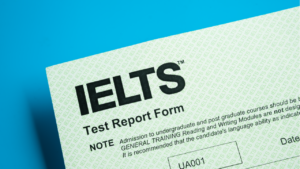If you enjoy adventure and exploring new places and things, you have come to the right place. This blog of the reading section of IELTS, South Pole Adventurer reading answers, will discuss a fascinating article about a brave adventurer who undertook an incredible journey to the South Pole.
We will provide answers to the reading questions and delve deeper into the story, exploring the challenges, triumphs, and lessons learned along the way. So, join us on this exciting reading adventure!
Good luck with your preparation!
Leap Advantage Virtual Spot Offer Event on May 10th 2024

Last call to secure your spot for Masters in STEM Program in the US for Fall ’24 exclusively for graduates and above.
Leap Advantage Virtual Spot Offer Event on May 10th 2024
Last call to secure your spot for Masters in STEM Program in the US for Fall ’24 exclusively for graduates and above.

5 Facts about the South Pole
The South Pole is the point located in the continent of Antarctica. It is the coldest, driest, and windiest place, with temperatures often dropping. Despite its harsh conditions, the South Pole has been a destination for adventurers and scientists for over a century, as it offers a unique opportunity to study the Earth’s climate and explore the world’s remotest parts.
Here are some of the facts about the South Pole
- Most of the world’s freshwater is found in Antarctica
- The Antarctic Peninsula warms up rapidly compared to other parts of the Earth.
- There are active volcanoes in Antarctica.
- Antarctica is a desert.
- In Antarctica, diamond dust floats in the air.
South Pole Adventurer Reading Passage
You should spend approximately 20 minutes answering Questions 1 – 14 based on the Reading Passage below.
South Pole Adventurer
1
There was a Japanese team led by heroic explorer Nobu Shirase attempting to be first in a race to the South Pole.
2
In January 1912, Antarctica was filled with explorers for a few weeks. On December 14th Norwegian Roald Amundsen had reached the South Pole and went back to the coast. Robert Scott and the men of the British Antarctic expedition had arrived at the pole on 17 January to find out that they had been beaten to it. A third man then arrived – a Japanese explorer named Nobu Shirase. His part in one of the greatest adventure stories of the twentieth century is not known much outside his own country, even by fellow explorers. Shirase and his team sailed into Antarctica’s Bay of Whales in the smallest ship ever to try its luck in these dangerous waters as Scott was nearing the pole and with the rest of the people not aware of Amundsen’s triumph. Since childhood Shirase had wanted to become a polar explorer. He initially planned to go to the North Pole like Amundsen. But both men quickly changed their plans after the American Robert Peary claimed to have reached it in 1909. Instead they went to the South Pole. In January 1910, Shirase promised to raise the flag at the South Pole within 3 years and put his plans before Japanese government officials. The question for many of them wasn’t whether he could do it but why it would be worth doing? The International Geographical Congress had said 15 years before that Antarctica, the last unknown continent, offered the chance to add to knowledge in almost every branch of science. Like the British, Shirase presented his expedition as a search for knowledge, making meteorological measurements and exploring unknown parts of the continent; he would bring back fossils.
3
Before Shirase, the British team declared their decision to carry out scientific research in Antarctica.
4
Even though the response from the government was positive, Shirase found it difficult to raise funds. Luckily a few months later, Japan’s former prime minister Shigenobu Kuma came to Shirase’s rescue. Shirase got together just enough money to buy and equip a small ship with Kuma’s help. Later he eventually got a scientist named Terutaro Takeda. His ship the Kainan Maru finally left Tokyo at the end of November 1910 with 27 men and 28 Siberian dogs on board. Shirase confidently outlined his plans to the media before leaving. First he would sail to New Zealand in a ship, and during the southern summer in February he would go to Antarctica, and then proceed to the South pole during the spring. But bad weather was a hurdle to the expedition and they reached New Zealand only by 8th February. By that time Amundsen and Scott reached Antarctica a month before and were preparing for winter.
Local reporters in New Zealand were surprised because his ship was only half the size of Amundsen’s ship. Although the ship was reinforced with extra wood and iron plate, the ship only had a small engine to go through the ice. Local reporters in New Zealand were surprised because his ship was only half the size of Amundsen’s ship. Although the ship was reinforced with extra wood and iron plate, the ship only had a small engine to go through the ice. On the one hand, some are suspicious about the Shirase’s courage. And, on the other hand, few considered that preparation for the journey was not good enough as they only had lightweight sledges made of bamboo and wood for transport across the ice.
5
The biggest challenge faced by him was time. Expeditions usually aimed to arrive in January or February as Antarctica is only accessible by sea for a few weeks in summer. ‘Our Japanese friends are running it fine with their determination and daring,’ wrote local reporters.
6
Kainan Maru on February 11th left New Zealand and went straight into the worst weather the captain had ever seen. They approached the coastline of Antarctica’s Ross Sea on March 6, looking for a place to halt. The ice began to surround them, which could trap them for the winter, an experience which no one will survive. The captain, who had a remarkable seamanship, steered north and escaped out of the ice. They would have to wait till the winter is over till the climate becomes warm again.
7
Shirase and 6 men finally reached Antarctica a year later. He had said he would stick to science this time but catching up with Scott or Amundsen was out of the question. As he had always dreamed, Shirase still felt the pull of the pole and decided he would head southward to experience the thrills and hardships of polar exploration. With 4 men and provisions for 20 days he would see how far they could get.
8
On 20 January 1912 Shirase set off with Takeda and 2 dog handlers, leaving 2 men at the edge of the ice shelf to make meteorological measurements. For a week they struggled through repeated blizzards, hiding in their tents during the worst of the weather. The temperature went to -25°C, and frostbite claimed the lives of some dogs. Shirase estimated there were enough provisions on 26th January to continue for 2 more days. 2 days later, he announced it was time to turn back. Takeda calculated they had reached 80°5 south and had travelled 250 km. They hoisted the Japanese flag.
9
All the men returned home on 3rd February. In June 1912 when the ship reached Tokyo Shirase was praised like a hero although he never reached the pole. Also he couldn’t contribute anything to science. Nor did Amundsen, whose only interest was to reach the pole first. But the expedition of Shirase was heroic. Only one of 4 teams have gone so far south beyond 80° south, at the time. Also they did all this without the advantages the other teams had and without any previous experience.
Crack IELTS Exam in first attempt

Attend Leap’s free masterclass to get tips, tricks and advance strategies to crack IELTS exam in first attempt
Crack IELTS Exam in first attempt
Attend Leap’s free masterclass to get tips, tricks and advance strategies to crack IELTS exam in first attempt

South Pole Adventurer Reading Q & A
Questions (1-5)
Choose NO MORE THAN THREE WORDS from the passage for each answer.
1. When did Norwegian Roald Amundsen reach the South Pole?
2. What did Shirase want to be since childhood?
3. How many dogs were there on the ship the Kainan Maru when leaving Tokyo?
4. What was the biggest challenge faced by Shirase?
5. When did Kainan Maru leave New Zealand?
Answers with explanations (1-5)
- 14th December
Reference:
From paragraph 2, ‘On December 14th Norwegian Roald Amundsen had reached the South Pole and went back to the coast.’
Explanation: As clearly stated in the above line, Norwegian Roald Amundsen reached the South Pole on 14th December.
- Polar explorer
Reference:
From paragraph 2, ‘Since childhood Shirase had wanted to become a polar explorer. He initially planned to go to the North Pole like Amundsen.’
Explanation: According to the paragraph, Shirase wanted to become a polar explorer since childhood.
- 28
Reference:
From paragraph 4, ‘His ship the Kainan Maru finally left Tokyo at the end of November 1910 with 27 men and 28 Siberian dogs on board.’
Explanation: According to the line above, it is clear that on the Kainan Maru ship, there were 28 Siberian dogs when it left Tokyo.
- Time
Reference:
From paragraph 5, ‘The biggest challenge faced by him was time. Expeditions usually aimed to arrive in January or February as Antarctica is only accessible by sea for a few weeks in summer.’
Explanation: As per the statement given above, the biggest challenge faced by Shirase was time.
- 11th February
Reference:
From paragraph 6, ‘Kainan Maru on February 11th left New Zealand and went straight into the worst weather the captain had ever seen.’
Explanation: As stated in the statement above, Kainan Maru left New Zealand on 11th February and that too in the worst weather ever seen by the captain.
Questions (6-10)
Complete the notes below.
Write NO MORE THAN TWO WORDS/ OR A NUMBER from the passage for each answer.
- Shirase initially planned to go to the North Pole like 6__________.
- Shirase presented his expedition as a search for 7________
- Shirase confidently outlined his plans to the 8______ before leaving.
- All the men returned home on 9_______.
- Only one of 4 teams have gone so far south beyond 10________, at the time.
Answers with explanations (6-10)
6. Amundsen
Reference:
From paragraph 2, ‘Since childhood Shirase had wanted to become a polar explorer. He initially planned to go to the North Pole like Amundsen.’
Explanation: As per the statement given above, in his childhood Shirase wanted to go and explore polar just like Amundsen.
7. Knowledge
Reference:
From paragraph 2, ‘Like the British, Shirase presented his expedition as a search for knowledge, making meteorological measurements and exploring unknown parts of the continent; he would bring back fossils.’
Explanation: As given in the paragraph, we can say that the expedition presented by Shirase was his search for knowledge, and to explore the unknown parts of the Antarctica.
8. Media
Reference:
From paragraph 4, ‘ Shirase confidently outlined his plans to the media before leaving. First he would sail to New Zealand in a ship, and during the southern summer in February he would go to Antarctica, and then proceed to the South pole during the spring.’
Explanation: According to the statement given above, Shirase before leaving for the his trip to the South Pole, he revealed his plans to the media.
9. 3rd February
Reference:
From paragraph 9, ‘All the men returned home on 3rd February. In June 1912 when the ship reached Tokyo Shirase was praised like a hero although he never reached the pole.’
Explanation: It is stated in the above paragraph that, all the men who went to the South Pole along with Shirase, returned back to Tokyo on 3rd February.
10. 80 degree
Reference:
From paragraph 9, ‘Only one of 4 teams have gone so far south beyond 80° south, at the time.’
Explanation: As per the above statement, there wer four teams that went to the Sout Pole and out of them on 1 team went 80 degrees beyond south.
Questions (11-14)
Do the following statements agree with the information in Reading Passage?
In boxes 11-14 on your answer sheet, write
YES if the statement agrees with the information
NO if the statement contradicts the information
NOT GIVEN if there is no information on this
11. Antarctica is only accessible by sea for a few weeks in summer.
12. Shirase defeated Amundsen in reaching the South Pole.
13. Shirase and 6 men finally reached Antarctica two years later.
14. Shirase was praised like a hero although he never reached the pole.
Answers with explanations (11-14)
- YES
Reference:
From paragraph 5, ‘Expeditions usually aimed to arrive in January or February as Antarctica is only accessible by sea for a few weeks in summer.’
Explanation: According to the statement, the answer is Yes because it is true that the sea in Antarctica is only accessible for a few weeks in summer.
- NO
Reference:
From paragraph 1 to 9, ‘There was a Japanese team led by heroic explorer………the advantages the other teams had and without any previous experience.’
Explanation: According to the passage, there is no information on Shirase defeating Amundsen in reaching the South Pole, but instead Shirase could never make it to the South Pole. Hence, the answer is No.
- NO
Reference:
From paragraph 7, ‘Shirase and 6 men finally reached Antarctica a year later. He had said he would stick to science this time but catching up with Scott or Amundsen was out of the question.’
Explanation: According to the paragraph, Shirase and 6 men reached Antarctica one year later and not two. Hence, the answer that they reached after two years is a No.
- YES
Reference:
From paragraph 9, ‘In June 1912 when the ship reached Tokyo Shirase was praised like a hero although he never reached the pole.’
Explanation: The answer is Yes because it is indeed true that Shirase was praised and applauded even though he never reached the pole, yet, he was praised for his effort and zeal to go to the South Pole.
Summing Up
The South Pole has been both a symbol of challenge and an epitome of humanity’s achievement from the earliest expeditions challenging human endurance to today’s quest that combines cutting edge technology with unshakeable determination.
We have come to admire the human spirit and the discovery in one of Earth’s most extreme environments as we conclude our exploration of the South Pole adventurers.
To improve your reading skills and comprehension of the reading section of IELTS, the passage on South Pole Adventurer reading answers can help you understand and score well in IELTS.
For more guidance, you can contact our Leap IELTS Expert Team.
Frequently Asked Questions (FAQs)
Q. How long does it take to reach the South Pole?
Ans. The time it takes to reach the South Pole depends on the mode of transportation and the starting point. If you are travelling by ski or on foot from the continent’s edge, it can take anywhere from 45 to 90 days to reach the South Pole. However, if you are flying in from Punta Arenas, Chile, reaching the South Pole station takes about 5 hours.
Q. Who was the first person to the South Pole?
Ans. The first person to reach the South Pole was Roald Amundsen, a Norwegian explorer, on December 14, 1911. His team of five men and 16 dogs completed the 1,400-mile journey from their base camp in just 99 days, beating the British expedition led by Robert Scott, who arrived at the pole a month later.
Q. What is the South Pole also known as?
Ans. The South Pole is also known as the Geographic South Pole or Terrestrial South Pole. It is the southernmost point on the Earth’s surface, located at the intersection of the Earth’s axis and the surface. The South Pole is located in Antarctica, a continent that is covered in ice and is the coldest, driest, and windiest place on Earth.
Q. What are the future prospects and challenges for exploration at the South Pole?
Ans. The future prospects for exploration at the South Pole are focused on scientific research, climate studies, and astronomy. The South Pole offers a unique location for observing the cosmos and studying the effects of climate change. However, exploration at the South Pole also presents significant challenges due to the extreme weather conditions, isolation, and logistical constraints.
Q. What are the dangers of exploring the South Pole?
Ans. Exploring the South Pole comes with inherent dangers due to the extreme weather conditions, isolation, and logistical constraints. Some of the dangers include frostbite, hypothermia, altitude sickness, and the risk of getting lost in the vast icy wilderness. The harsh weather conditions can also make it difficult to access medical care in case of an emergency, making it crucial to be well-prepared and have contingency plans in place.
Q. What are the environmental impacts of human activity in Antarctica?
Ans. Human activity in Antarctica has the potential to have significant environmental impacts on the fragile ecosystem. Some of the environmental impacts include pollution, disturbance of wildlife, and damage to the fragile vegetation. The introduction of non-native species can also be a major threat to the native flora and fauna. To mitigate these impacts, strict regulations and guidelines have been put in place to ensure that human activity in Antarctica is conducted in a responsible and sustainable manner.
Q. What is the purpose of taking the IELTS test?
Ans. The purpose of the IELTS test is to evaluate a candidate’s ability to use English effectively in an academic or professional setting. The test measures the four language skills – listening, reading, writing, and speaking – and is widely recognized by universities, employers, and immigration authorities in English-speaking countries. The test is used to determine a candidate’s proficiency in English and is often a requirement for admission to universities, professional organizations, and visa applications.
Q. Which countries accept IELTS scores?
Ans. The IELTS test is recognized and accepted by more than 10,000 organizations in over 140 countries worldwide. This includes universities, colleges, employers, professional organizations, and immigration authorities. The test is widely accepted in English-speaking countries such as the United States, Canada, the United Kingdom, Australia, and New Zealand, as well as in many non-English-speaking countries where English is used as a second language.
Q. What topics are covered in IELTS?
Ans. The IELTS test assesses a candidate’s proficiency in English, focusing on four language skills: listening, reading, writing, and speaking. The listening test includes conversations, lectures, and discussions on a wide range of topics. The reading test includes passages on topics such as science, history, and social studies. The writing test requires candidates to write an essay or a report on a given topic, and the speaking test involves a face-to-face interview where candidates are asked to speak on various topics such as personal experiences, current events, and opinions.
Q. What information will I get before each part?
Ans. Before each part of the IELTS test, you will receive instructions and information about the format of the test.
1. For the listening test, you will receive instructions on how to complete the answer sheet, the number of questions, and the time limit.
2. For the reading test, you will receive instructions on how to complete the answer sheet, the number of passages, the number of questions per passage, and the time limit.
3. For the writing test, you will receive instructions on how to complete the task, the number of words required, and the time limit.
4. For the speaking test, you will be given instructions on how to complete the task, the number of questions and the time limit.
Q. How long should I spend on each passage in the reading section?
Ans. In the IELTS reading section, there are three passages, and the total time allocated for the test is 60 minutes. It is recommended that you spend around 20 minutes on each passage, including the time required to read the passage and answer the questions. However, the time allocation may vary depending on your reading speed and comprehension level.
Q. Will I lose marks for spelling and grammar mistakes in the reading section?
Ans. You will be assessed based on your ability to read and understand written texts in English. While spelling and grammar are important, the focus of the test is on your ability to understand the meaning of the text. Therefore, you will not lose marks directly for spelling and grammar mistakes in the reading section. However, it is important to note that poor spelling and grammar can affect your ability to understand the text, which may result in incorrect answers.






